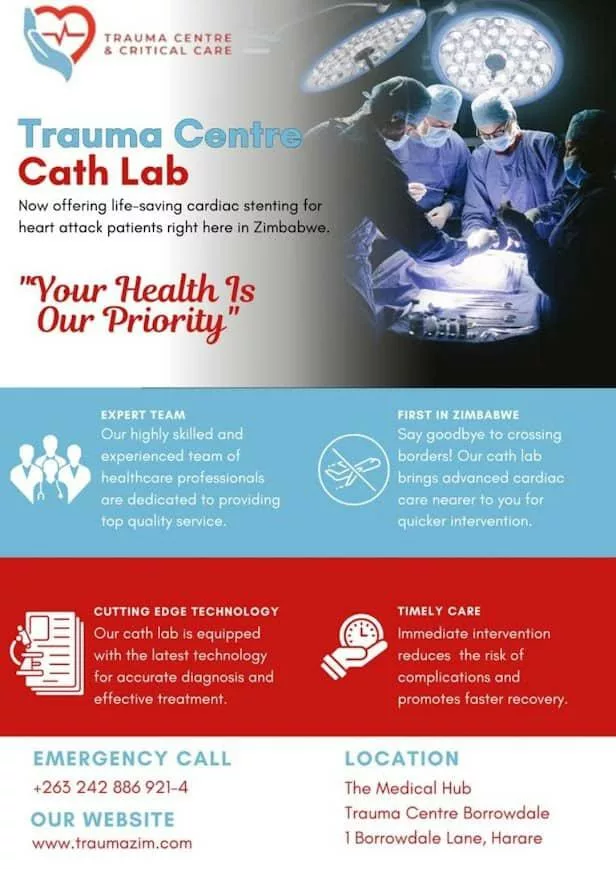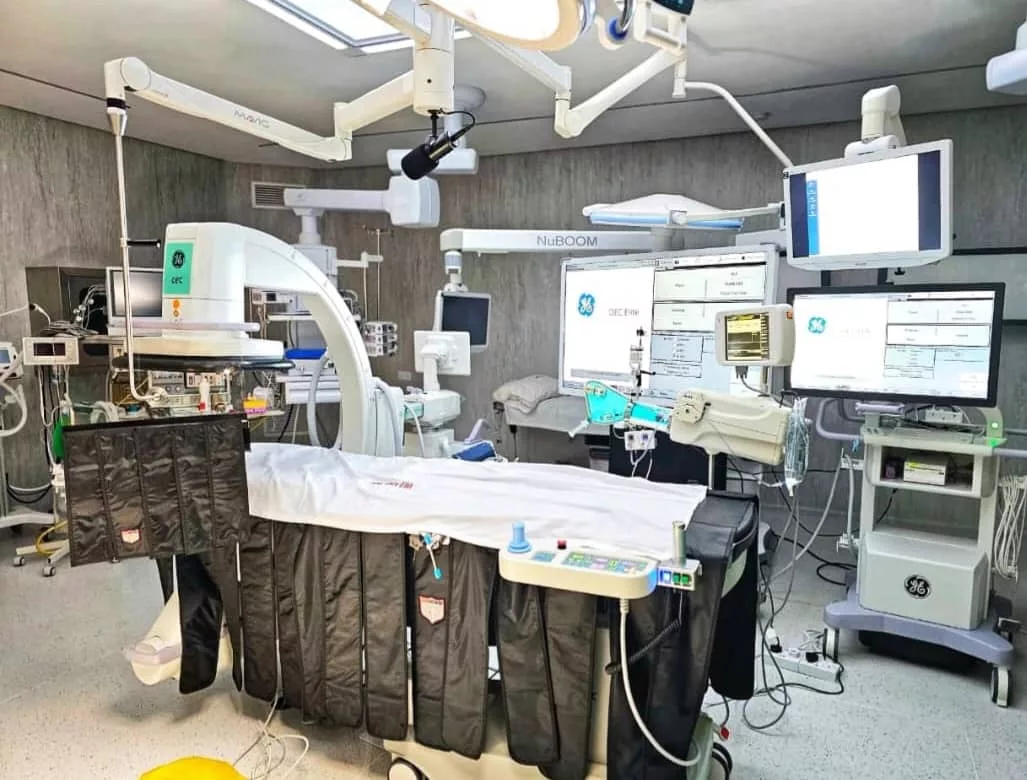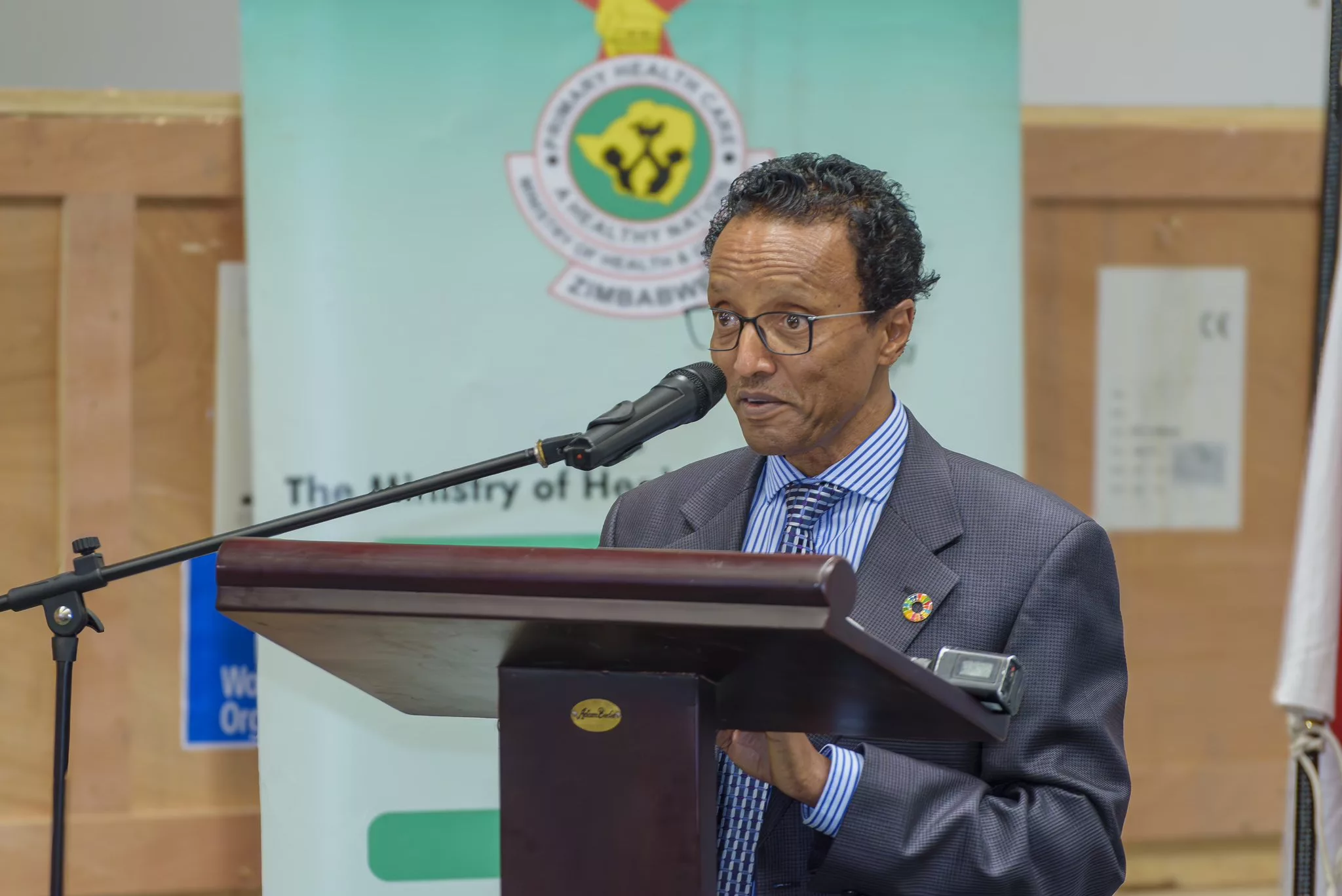|
Getting your Trinity Audio player ready...
|
…Minimal Invasive Heart Procedures Now Offered Locally
Writes Wendy Olivier
Zimbabwe’s healthcare sector has witnessed a major leap forward with the launch of a state-of-the-art Cardiac Catheterisation Laboratory (CATH-LAB), setting new standards for heart disease diagnosis, treatment, and care. Situated at the Trauma Centre, Borrowdale Hospital in Harare, this cutting-edge facility brings hope to many individuals battling heart conditions. Previously, patients had to travel abroad for advanced heart treatment, but now, they can access world-class services right at home.
The CATH-LAB is staffed by a team of highly trained Zimbabwean specialists, educated in South Africa. So far, they have successfully performed several minimally invasive heart procedures, showcasing the potential of advanced technology and expert care. This achievement is a testament to the strength of Public-Private Partnerships (PPP) in healthcare development.
The lab’s minimally invasive procedures include coronary stenting, blood clot removal, and stent insertion to keep coronary vessels open. These treatments are life-saving and significantly reduce the risk and severity of strokes.

According to Trauma Centre Matron, “This modern CATH-LAB setup allows cardiologists to perform complex procedures with precision, speed, and minimal risk, improving patient outcomes significantly, saving the heart muscle from damage.”
The window period to save the damaged heart muscle from permanent damage is 6-10 hours. Getting a stent done within that time will result in the best outcomes with the patient returning home within 24 hours.
The Cardiac Catheterisation Laboratory is designed for minimally invasive procedures to diagnose and treat cardiovascular diseases. It features state-of-the-art imaging technology, including high-resolution digital X-ray systems, intravascular ultrasound (IVUS), and optical coherence tomography (OCT), which offer clear and detailed images of the heart and blood vessels.
Additionally, advanced patient monitoring systems track vital signs, ECG, and hemodynamic parameters to ensure patient safety during procedures.
The ergonomic design of the laboratory ensures efficient workflows, reduces radiation exposure, and promotes optimal patient care. High-speed data networks allow seamless image sharing and analysis, further improving treatment accuracy.
A sterile environment is crucial for any clinical procedure, and strict infection control measures —including laminar airflow and sterilisation protocols— are adhered to.
Integrated audiovisual systems also enable real-time collaboration among medical staff, while AI integration and advanced software aid in diagnostics and treatment planning.
The opening of the CATH-LAB marks a significant milestone in Zimbabwe’s efforts to enhance its healthcare infrastructure.
By investing in cutting-edge technology and training local specialists, the country is building a more self-sufficient and sustainable healthcare system.
The COVID-19 pandemic further emphasized the importance of such facilities, with many patients now using oximeters at home to monitor their oxygen levels and prevent complications.
The hybrid CATH-LAB offers seamless transitions between various procedures, resulting in better patient outcomes. This is a crucial step in Zimbabwe’s broader goal of strengthening its healthcare infrastructure and boosting medical tourism.
In fact, Zimbabwe has the potential to become a major hub for medical tourism in Sub-Saharan Africa. The country was among the first in Africa to secure adequate COVID-19 vaccine supplies, making healthcare more accessible to its citizens despite vaccine hesitancy fueled by myths and misconceptions.
As neighbouring countries looked to Zimbabwe for medical care, it became a beacon of opportunity for medical tourism. Health journalist Catherine Murombedzi shared her experience on the sidelines of a tuberculosis conference in Goa, India, where she witnessed first-hand the difficulties faced by patients seeking treatment abroad.
“Caregivers struggled with the stress of connecting flights, managing hand luggage, and looking after sick patients in cramped economy-class seats. Had the complex procedures they sought been available at home, they would have gladly opted for local treatment. The benefits are clear, and patients can stay close to family and friends while receiving world-class care. The CATH-LAB offers new confidence in Zimbabwe’s healthcare sector,” said Catherine.
By saving lives and improving patient care, the CATH-LAB is already making a transformative impact on Zimbabweans. The facility is a shining example of what can be achieved through a combination of investment, expertise, and determination.
The ongoing collaboration between public and private sectors will further enhance Zimbabwe’s medical tourism potential, retaining both foreign currency and medical expertise within the country.
Feedback: [email protected]






